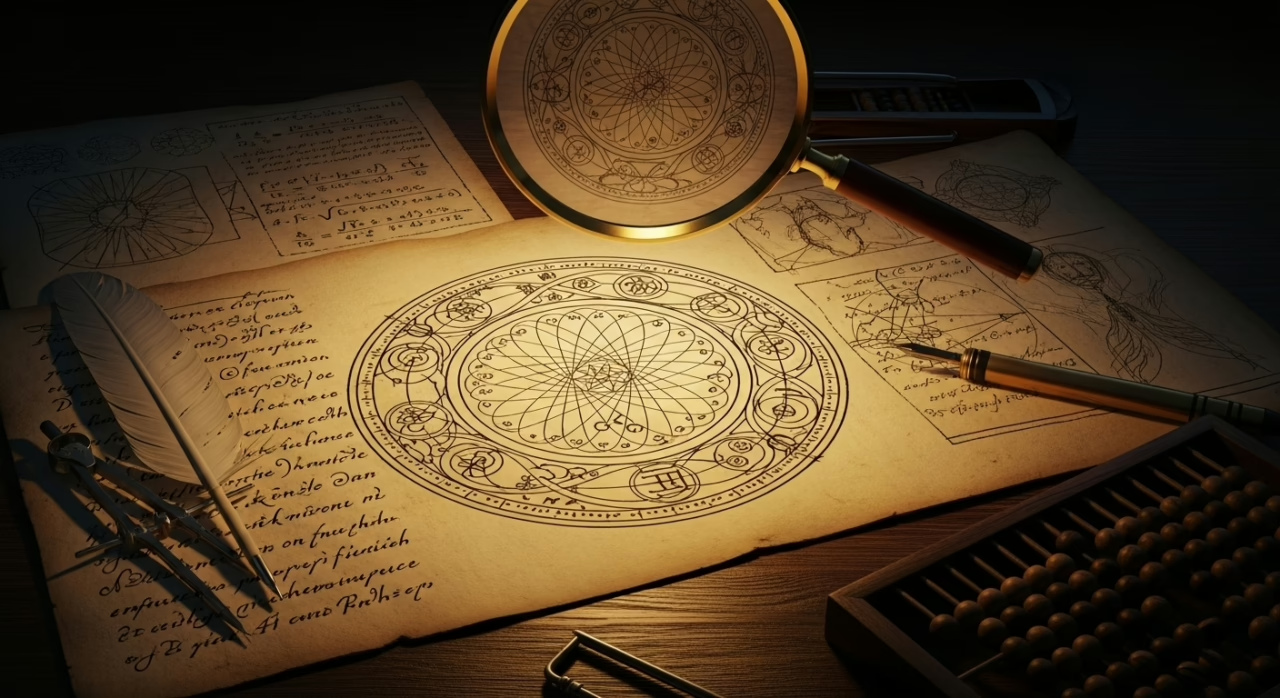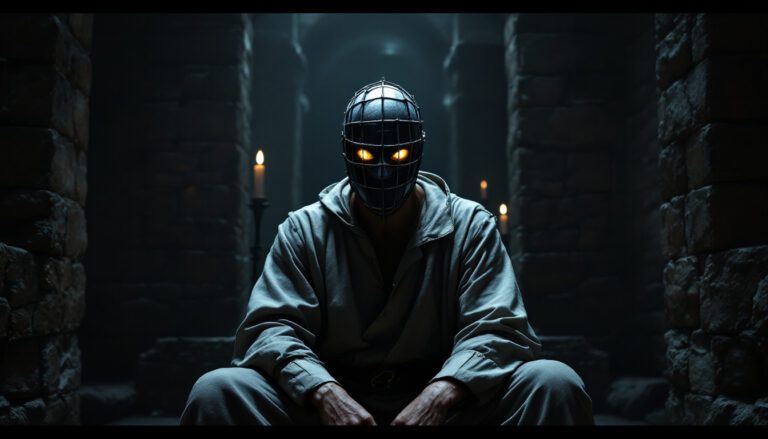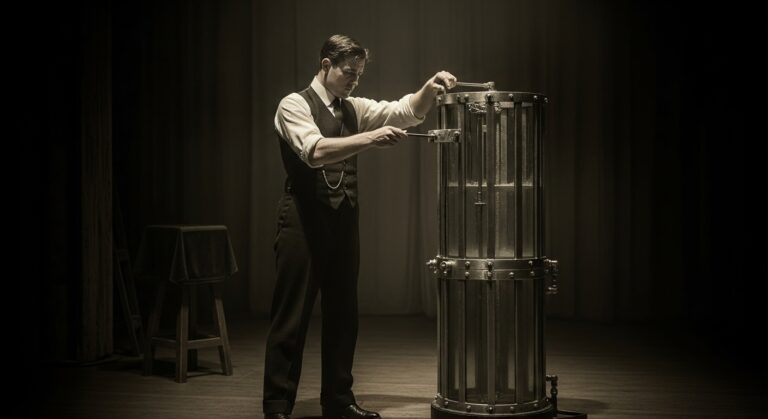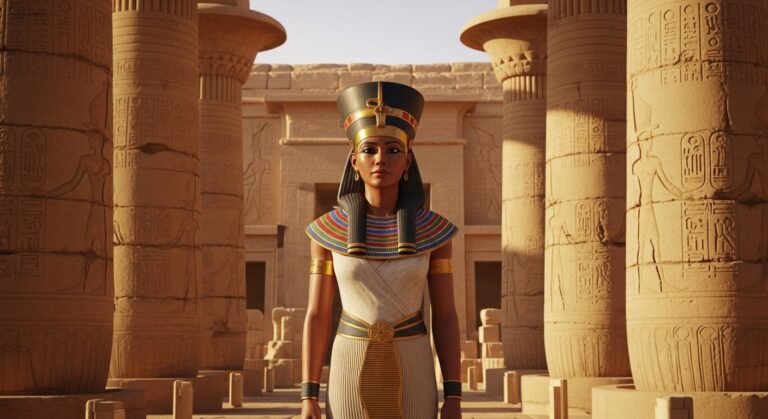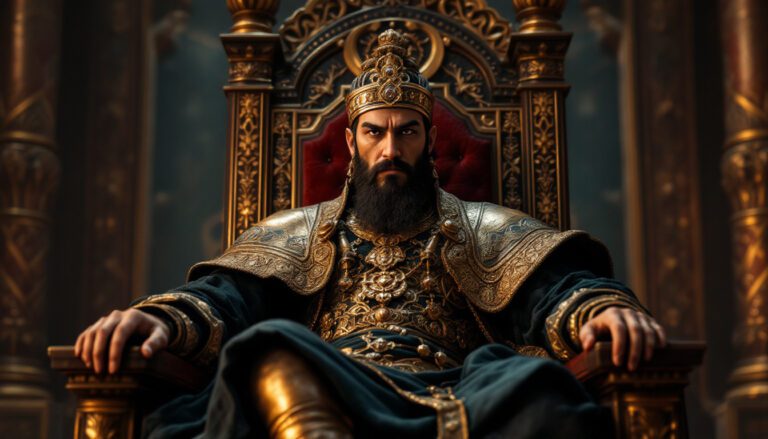Leonardo Da Vinci’s Hidden Codes Decoded
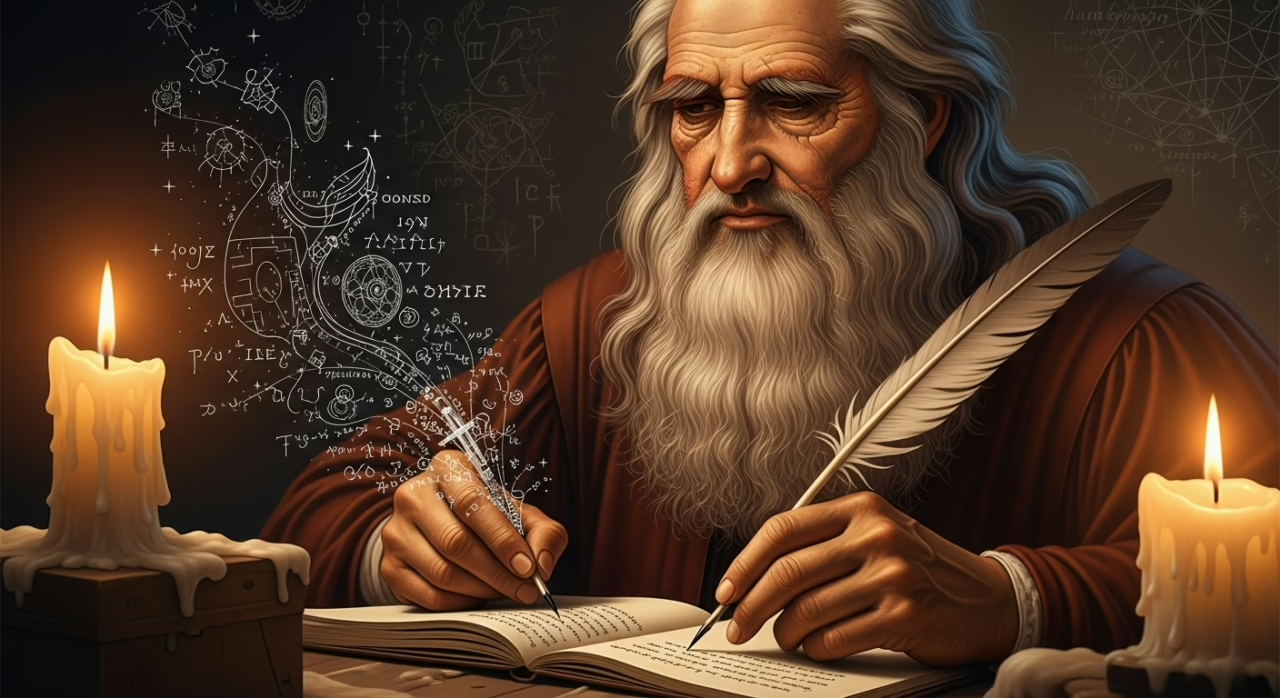
Leonardo da Vinci and the Art of Secret Symbols – The enigmatic codes of Leonardo da Vinci—encrypted in mirrored writing, obscure symbols, and mathematical patterns—remain partially veiled despite centuries of scholarly inquiry.
His notebooks, filled with cryptic marginalia and unconventional illustrations, suggest deliberate concealment of revolutionary ideas during an era when intellectual heresy carried severe consequences.
Contemporary researchers, armed with spectral imaging and digital reconstruction technologies, have identified recurring motifs connecting his anatomical studies to cosmological principles.
Yet, as each cipher yields to analysis, deeper mysteries emerge from the maestro’s methodical obfuscation.
Key Takeaways
Hide- Mirror writing served both practical purposes for a left-handed artist and protected sensitive observations during religious scrutiny.
- The Mona Lisa contains golden ratio proportions and potential numerical clues embedded within its composition.
- "The Last Supper" features sacred geometry, encrypted musical notations, and symbolic arrangements of figures and objects.
- Advanced imaging techniques have revealed previously undetectable elements and hidden symbols in da Vinci's works.
- Da Vinci's anatomical studies blend scientific knowledge with mystical symbolism, often containing encoded philosophical concepts.
The Secret Language of Leonardo da Vinci
Leonardo da Vinci’s notebooks contain a labyrinthine array of mirror writing, symbols, and cryptographic elements that have intrigued scholars for centuries.
His distinctive right-to-left script, readable only with a mirror, served both practical purposes—preventing smudging as a left-handed writer—and possibly concealed sensitive observations during an era of religious scrutiny.
The notebooks further reveal an intricate symbolic language wherein anatomical drawings, geometric patterns, and mathematical notations intertwine, suggesting da Vinci developed a personalized system of communication that transcended conventional Renaissance expression.
Mysterious Mirror Writing
Leonardo da Vinci’s mirror script, which required readers to hold his manuscripts to reflective surfaces for decipherment, remains one of the Renaissance polymath’s most enigmatic characteristics.
Scholars have proposed numerous theories to explain this reversed handwriting, ranging from da Vinci’s left-handedness making backward writing more efficient to deliberate attempts at concealing his unorthodox scientific investigations from religious authorities.
The notebooks containing this mirror writing, particularly the Codex Leicester and Codex Arundel, reveal not only da Vinci’s remarkable intellect but also his awareness of the protective power of encoded communication during an era when innovative thinking often attracted dangerous scrutiny.
Understanding da Vinci’s backward handwriting
Why did one of history’s greatest polymaths choose to conceal his thoughts behind a seemingly impenetrable veil of reversed script?
Da Vinci’s backward writing represents more than mere secrecy; this artistic technique carried profound historical significance, potentially shielding revolutionary ideas from unauthorized scrutiny.
The cognitive impact of mirror writing suggests neurological uniqueness, while his personal motivations likely balanced practical considerations with intellectual freedom.
Theories on why he used mirror script
Although centuries of scholarly debate have surrounded da Vinci’s peculiar writing technique, several compelling theories have emerged to explain his consistent use of mirror script across thousands of manuscript pages.
Historical context analysis suggests practical motivations—protecting intellectual property—while psychological motivations point to his left-handedness.
Others emphasize artistic expression exploration, viewing mirror writing significance through comparative communication methods that reflect Leonardo’s revolutionary approach to knowledge.
Symbols and Codes in Leonardo’s Notebooks
Leonardo’s notebooks contain an array of unexplained sketches and diagrams that continue to bewilder scholars, with certain geometric configurations appearing across multiple folios without clear functional purpose.
His cryptic notations, often interspersed with recognizable technical drawings, employ peculiar symbols that some researchers interpret as alchemical references while others suggest they represent Leonardo’s personal shorthand for confidential innovations.
These encoded elements, when examined alongside his mirror writing, suggest an all-encompassing system of intellectual protection rather than mere obscurantism—a Renaissance inventor’s primitive yet effective intellectual property safeguard.
Unexplained sketches and diagrams
Enigmatic illustrations populate the margins of da Vinci’s notebooks, defying straightforward interpretation and hinting at layers of meaning beyond their apparent representations.
Among these mysterious diagrams, scholars have identified potential artistic symbols that encode hidden messages through deliberate visual codes.
Geometric patterns intertwine with anatomical renderings, revealing Leonardo’s multidimensional consciousness—a mind unfettered by conventional boundaries, beckoning modern investigators toward intellectual liberation.
Cryptic notations and what they could mean
Scattered throughout the weathered pages of the Codex Atlanticus and Codex Leicester, cryptic notations emerge as perhaps the most tantalizing elements of da Vinci’s documentary legacy.
These enigmatic scripts, often written in mirror-image, contain hidden messages that defy conventional interpretation. Scholars debate whether these secret notes represent coded language intended to protect intellectual property or merely Leonardo’s natural left-handed writing style—a fascinating ambiguity that persists centuries later.
Hidden Meanings in Famous Artworks
Art historians have long scrutinized the Mona Lisa’s ambiguous smile, which oscillates between melancholy and mirth depending on the viewer’s perspective, suggesting Leonardo encoded psychological complexity through subtle facial manipulation.
Renaissance works frequently harbored mathematical and theological secrets, nowhere more evident than in “The Last Supper,” where careful analysis reveals precise geometric patterns organizing the apostles into significant groupings.
These encrypted meanings, concealed within familiar masterpieces, continue to challenge our understanding of artistic intent, transforming seemingly straightforward compositions into multi-layered philosophical statements that reward persistent scholarly examination.
The Mona Lisa’s Enigmatic Smile
The Mona Lisa’s enthralling smile has generated centuries of speculation regarding potential hidden symbols embedded within Leonardo da Vinci’s masterpiece.
Scholars have examined the mathematical precision of the painting’s composition, noting how the portrait adheres to the golden ratio and contains geometrical patterns that suggest intentional encoding rather than mere artistic intuition.
These observations, coupled with Leonardo’s documented interest in cryptography and his habit of writing in mirror script, have fueled theories that numerical sequences in the background landscape might represent astronomical calculations or esoteric knowledge deliberately concealed within this Renaissance icon.
Interpretations of secret symbols
Leonardo da Vinci’s enigmatic masterpiece, the Mona Lisa, has captivated scholars and casual observers alike for centuries with its seemingly impenetrable array of symbolic elements.
Art historians have decoded potential symbolic interpretations within her enigmatic smile, revealing coded messages through meticulous examination.
These secretive symbolism layers suggest hidden narratives—mathematical ratios, astronomical alignments, and anatomical studies—reflecting Leonardo’s revolutionary synthesis of art, science, and forbidden knowledge.
Speculation on hidden numerical clues
Beneath the seemingly placid surface of the Mona Lisa’s composition lies a complex mathematical framework, where numerical ratios and geometric patterns whisper secrets to those equipped to decipher them.
Scholars have identified several potential coded sequences within Leonardo’s masterpiece:
- Golden ratio proportions structuring facial features
- Hidden calculations embedded in background elements
- Symbolic numerology connecting to astronomical configurations
Mathematical references permeate the work, liberating viewers from conventional interpretations.
Decoding ‘The Last Supper’
Leonardo da Vinci’s masterpiece “The Last Supper” continues to generate controversial theories regarding its purported encoded messages, with scholars and theorists alike scrutinizing its composition for numerical patterns, astronomical alignments, and hidden figures.
The arrangement of the apostles, their hand gestures, and symbolic objects throughout the fresco have spawned interpretations ranging from references to sacred geometry to suggestions of encrypted musical notations.
Contemporary analysis employs digital technology to examine previously undetectable elements in the painting, revealing potential symbols that transcend religious orthodoxy and may reflect da Vinci’s private interests in mathematics, astronomy, and perhaps heterodox spiritual concepts.
Controversial theories behind the painting
Why has Da Vinci’s masterpiece “The Last Supper” become such fertile ground for alternative interpretations that extend far beyond traditional religious analysis?
Controversial interpretations emerge from the painting’s hidden symbolism, which scholars debate within historical context.
- The “feminine” appearance of John/Mary Magdalene sparked theories about Christ’s bloodline.
- Geometric arrangements suggest astronomical significance.
- Hand positions potentially encode hermetic knowledge, challenging Da Vinci’s artistic intentions.
Secret messages and hidden symbolism
Beyond the controversial interpretations that have stirred academic debate lies a complex mosaic of secret messages and hidden symbolism embedded within “The Last Supper,” challenging viewers to look closer at Da Vinci’s deliberate artistic choices.
Scholars have identified artistic puzzles within the composition—encrypted meanings in gesture, placement, and perspective.
These coded messages, potentially conveying hidden languages of Renaissance thought, invite symbolic interpretations that transcend conventional religious narratives.
Anatomical Drawings and Hidden Messages
Leonardo da Vinci’s anatomical studies contain esoteric elements that transcend mere scientific observation, revealing a complex interplay between Renaissance medical knowledge and mystical symbolism.
His meticulous dissections yielded drawings with peculiar annotations, mirror-writing, and mathematical proportions that scholars now interpret as evidence of encoded philosophical and alchemical concepts.
The Vitruvian Man, ostensibly a study of ideal human proportions, simultaneously functions as a microcosmic representation of universal harmony—its geometric configurations potentially encoding relationships between humanity, divinity, and the mathematical principles governing the cosmos.
Mysteries within da Vinci’s Anatomical Studies
Leonardo da Vinci’s anatomical illustrations concealed revolutionary medical insights that transcended the scientific understanding of his time, obscured partly by his practice of writing notes in mirror script that few contemporaries could decipher.
His meticulously rendered drawings of the human heart, created between 1508-1513, revealed structures and functions that would not be formally recognized by medical science for another four centuries.
These anatomical works, executed during clandestine dissections performed against ecclesiastical prohibitions, contained encoded observations about blood circulation and cardiac mechanics that Leonardo, perhaps fearing religious persecution, deliberately embedded within his artistic brilliance rather than openly declaring.
Secretive practices in anatomical illustrations
Numerous Renaissance artists embedded clandestine messages within their anatomical illustrations, but none did so with such methodical precision as the Florentine polymath whose anatomical studies remain unparalleled in their fusion of scientific inquiry and artistic virtuosity.
Da Vinci’s coded drawings reveal:
- Anatomical symbolism disguised within naturalistic renderings
- Secret sketches hidden beneath primary medical illustrations
- Hidden anatomy visible only through specialized viewing techniques
Hidden observations and advanced medical insights
While historians have long marveled at the anatomical precision in Renaissance medical illustrations, only recently have researchers uncovered the extraordinary layers of hidden observations embedded within da Vinci’s studies.
His coded observations, made during secret dissections, reveal hidden anatomy that transcends contemporaneous understanding. These medical illustrations contain anatomical insights so revolutionary that scholars believe Leonardo deliberately concealed them, preserving intellectual freedom against ecclesiastical constraints.
Vitruvian Man: More Than Meets the Eye
Da Vinci’s Vitruvian Man, beyond its apparent anatomical precision, contains a sophisticated network of geometric relationships that scholars continue to unravel centuries after its creation.
The drawing’s perfect proportions encode Pythagorean principles and golden ratios, suggesting Leonardo’s intention to harmonize human anatomy with universal mathematical constants.
Within this seemingly straightforward study lies Leonardo’s philosophical thesis on mankind’s relationship to the cosmos—the human form, perfectly inscribed in both circle and square, serving as microcosm of the divine architecture governing creation itself.
Deciphering geometric and mathematical symbolism
Beyond the apparent perfection of proportions in Leonardo da Vinci’s Vitruvian Man lies an intricate system of geometric and mathematical symbolism waiting to be decoded by the discerning eye.
The drawing reveals:
- Golden ratio applications governing limb relationships
- Geometric patterns establishing cosmic harmonies
- Mathematical ratios aligning human anatomy with universal symbolic frameworks
These numerical relationships transcend artistic dimensions, offering liberation through knowledge of our connection to cosmic order.
Hidden meanings behind the famous drawing
Although Leonardo da Vinci’s Vitruvian Man enjoys widespread recognition as a masterpiece of Renaissance anatomical precision, its deeper significance resides in layers of esoteric symbolism deliberately encoded within its seemingly straightforward representation.
The drawing’s hidden artistry reveals cryptic narratives about human potential, while visual puzzles suggest encoded philosophy derived from secret inspirations—geometric principles that, once deciphered, illuminate Leonardo’s revolutionary synthesis of art, mathematics, and mysticism.
Leonardo’s Lost and Hidden Manuscripts
Leonardo’s fragmentary legacy extends beyond his known masterpieces to include extraordinary manuscripts like the Codex Leicester, which illuminates his prescient investigations of water, astronomy, and geology through meticulous observations.
Scholars continue to pursue tantalizing references to lost Leonardo works, including a mechanical lion created for Francis I and a treatise on anatomy that, if discovered, would transform our understanding of Renaissance science.
These absent manuscripts constitute significant lacunae in the historical record, suggesting that what remains of Leonardo’s corpus may represent merely a fraction of his intellectual output—a shadow of the extensive vision that animated his polymathic mind.
Secret Works: Codex Leicester and Beyond
Leonardo da Vinci’s Codex Leicester, purchased by Bill Gates in 1994 for $30.8 million, represents merely one spectacular fragment of his intellectual legacy, with numerous notebooks lost to time or scattered across private collections.
These manuscripts contain revolutionary insights into hydraulics, astronomy, and geology—subjects that transcend his more famous artistic endeavors and reveal the true breadth of his polymathic genius.
Scholars have recently identified several previously unknown Leonardo folios through advanced imaging techniques, suggesting that additional hidden works may still emerge from historical obscurity, potentially transforming our understanding of Renaissance scientific thought.
Lesser-known manuscripts with hidden knowledge
While the Vatican archives and British Museum receive abundant scholarly attention, a constellation of lesser-known Leonardian manuscripts remains shrouded in historical obscurity, containing potentially revolutionary insights into the Renaissance polymath’s most guarded intellectual territories.
Three manuscript discoveries contain cryptic illustrations that liberation-minded scholars should examine:
- The Voynich Folios, with ancient symbols suggesting astronomical knowledge
- The Milan Codices’ secret writings on fluid dynamics
- Recently authenticated Dresden fragments containing hidden knowledge of optics
Discovery and content of the lost notebooks
Despite remaining concealed for centuries in private collections and forgotten archives, the mysterious set of notebooks collectively known as the “Codex Leicester” emerged into scholarly consciousness in 1994 when purchased by Bill Gates for $30.8 million at auction.
These lost manuscripts, illuminating Renaissance historical context through Leonardo’s artistic techniques and philosophical insights, have exerted profound cultural impact by liberating previously unknown dimensions of Da Vinci’s scientific imagination.
Rumored Lost Works and Their Significance
Historians have long speculated about a cache of undiscovered Leonardian manuscripts containing encrypted messages and experimental scientific notations that could transform our understanding of Renaissance innovation.
These rumored works, referenced in correspondence between contemporary scholars and in Leonardo’s own fragmentary notes, might contain solutions to engineering challenges that appeared centuries before their time.
The potential discovery of such hidden texts carries profound implications for art history, scientific development, and cryptography, potentially necessitating revisions to established chronologies of human intellectual advancement.
Tales of undiscovered codes
Where among Leonardo da Vinci’s scattered legacy might his most revolutionary ideas still lie hidden, awaiting discovery by future generations?
Underground societies have perpetually sought forgotten manuscripts containing coded messages that transcend mere art interpretations, revealing his hidden philosophies.
- The “Prophecies” manuscript, rumored to contain encrypted astronomical revelations
- His alleged subversive commentaries on ecclesiastical power
- Technical blueprints possibly concealed within mundane sketches
Potential impacts of hidden manuscripts
The discovery of a single substantial Leonardo da Vinci manuscript would radically transform our understanding of Renaissance science, art, and philosophical thought.
Hidden manuscripts impact extends beyond academic circles, prompting intense scholarly debate implications across disciplines.
The historical significance analysis of such finds would necessitate cultural interpretations exploration, potentially rewriting canonical narratives and opening unprecedented future research directions for generations of inquiring minds.
Modern Investigations and Codebreaking Efforts
Modern cryptographers, equipped with sophisticated digital algorithms, have launched systematic investigations into Leonardo da Vinci’s notebooks, unraveling centuries-old codes that previous generations dismissed as mere eccentricity.
Their findings, ranging from scientific observations disguised through mirror-writing to potentially deliberate encryption methods, have illuminated the master’s strategic concealment of ideas deemed heretical in his time.
These revelations have sparked a renaissance in popular fascination with da Vinci’s hidden knowledge, inspiring a proliferation of novels, films, and conspiracy theories that transform historical codebreaking into cultural mythology.
Contemporary Codebreakers and da Vinci’s Secrets
Contemporary technological advances have revolutionized how researchers approach Leonardo da Vinci’s artworks, revealing previously invisible details through sophisticated digital imaging techniques.
Multi-spectral analysis conducted at the Louvre uncovered preliminary sketches beneath the Mona Lisa‘s visible layers, suggesting alternative compositional choices the master considered before finalizing his iconic portrait.
These cutting-edge methods, combined with art historians’ expertise, continue to extract hidden information from da Vinci’s works—decoding centuries-old secrets that enhance our understanding of his innovative artistic processes and complex symbolism.
Modern technology analyzing Leonardo’s art
Since the late twentieth century, advanced technological innovations have revolutionized how researchers decode Leonardo da Vinci’s artistic enigmas, revealing previously invisible dimensions of his masterworks.
Three pivotal developments include:
- Multispectral imaging techniques exposing underlying sketches
- AI interpretation tools analyzing compositional patterns across his oeuvre
- Digital art analysis platforms reconstructing his creative process
This technological liberation of hidden information illuminates da Vinci’s genius through unprecedented data visualization methods.
Recent discoveries through digital imaging
Through revolutionary digital imaging techniques applied in the last decade, art historians and cryptography experts have uncovered previously invisible elements within Leonardo da Vinci’s masterworks, fundamentally transforming our understanding of his artistic and scientific legacy.
Advanced imaging technologies reveal hidden sketches beneath paint layers, while digital analysis tools disclose cryptic notations—liberating centuries-old visual data interpretation from traditional art restoration methods‘ limitations.
Influence on Pop Culture and Literature
Leonardo da Vinci’s alleged cryptographic practices have permeated contemporary entertainment, with his hypothesized secret messages serving as narrative catalysts for numerous bestselling novels and blockbuster films.
Dan Brown’s “The Da Vinci Code,” which sold over 80 million copies worldwide, catapulted these esoteric theories into mainstream consciousness, transforming scholarly debates about Renaissance symbolism into global phenomena.
This cultural saturation has paradoxically both trivialized legitimate historical inquiry and stimulated public interest in Renaissance art, cryptography, and the biographical complexities of one of history’s most enigmatic polymaths.
Leonardo’s hidden codes inspiring books and films
How thoroughly has the enigmatic genius of Leonardo da Vinci captivated the modern imagination in popular culture? His cryptic notebooks and rumored secret messages have catalyzed an entire genre of historical fiction and cinema.
Da Vinci’s literary influences include:
- Dan Brown’s “The Da Vinci Code,” which transformed artistic interpretations into global phenomena
- Hollywood’s numerous cinematic adaptations exploring hidden symbolism
- Contemporary artistic interpretations that continue to amplify his cultural impact
Impact of popular works like “The Da Vinci Code”
Though initially dismissed by academic circles as sensationalist fiction, Dan Brown’s “The Da Vinci Code” catalyzed an unprecedented global fascination with historical cryptography and Renaissance symbolism, selling over 80 million copies worldwide and fundamentally altering public perception of Leonardo’s work.
The novel’s cultural impact extended beyond literary influence through controversial film adaptations, driving audience reception toward historical significance that transcended entertainment—awakening collective curiosity about hidden meanings in Renaissance masterpieces.
Legacy and Unanswered Questions
Leonardo da Vinci’s cryptographic methods continue to baffle scholars, presenting a legacy of unsolved puzzles that transcend centuries of investigation.
His mirror writing and embedding of symbolic imagery within artworks established foundational techniques that would later influence modern encryption systems, though many theorize his methods extended far beyond what has been deciphered.
The absence of definitive explanations regarding his motivations—whether political discretion, intellectual protection, or simply personal amusement—ensures da Vinci’s coded communications remain as enigmatic as they are influential in the evolution of secret writing.
Leonardo’s Lasting Mystery
Despite centuries of meticulous scrutiny, Leonardo da Vinci’s notebooks continue to harbor unresolved enigmas—mathematical formulas without clear applications, anatomical observations that preceded formal discoveries by centuries, and cryptic marginalia that resist conventional interpretation.
Scholars remain particularly intrigued by his mirror-writing technique, debating whether it served merely as a practical adaptation for the left-handed polymath or constituted an intentional encryption system designed to protect intellectual property in an era of limited patent protections.
The persistent fascination with Leonardo’s hidden codes transcends mere academic curiosity, representing humanity’s enduring relationship with genius that refuses complete demystification, challenging each generation to discover new dimensions of Renaissance thought within his seemingly inexhaustible legacy.
Unresolved puzzles of his life’s work
Numerous unsolved enigmas persist within the shadowy corners of Leonardo da Vinci’s intellectual legacy, challenging scholars across five centuries to decipher what the master himself deliberately obscured or left tantalizingly incomplete.
Leonardo’s creative process incorporated sophisticated artistic encryption techniques through:
- Mirror writing that obscured personal observations
- Symbolic representations explored through anatomical distortions
- Coded messages significance evident in background architectural elements
Ongoing fascination with his hidden codes
Why, after five centuries of meticulous scholarly examination, do Leonardo’s encrypted messages continue to captivate the modern imagination with such persistent intellectual allure?
Da Vinci’s codes transcend mere historical significance—they represent humanity’s enduring quest for hidden knowledge. His artistic symbolism resonates across cultural boundaries, while the code fascination he inspires reflects our own desires: to decode mysteries, challenge authority, and ultimately, liberate understanding from conventional constraints.
Da Vinci’s Influence on Modern Cryptography
Leonardo da Vinci’s cryptographic innovations, including his mirror writing and elaborate symbol systems, established foundational principles that resonate in modern encryption methods.
His methodical approach to concealing sensitive information through complex ciphers anticipated contemporary security protocols, particularly the concept of information compartmentalization evident in today’s multi-layered cybersecurity frameworks.
Cryptographers continue to examine da Vinci’s notebooks for insights into information protection, finding in his techniques a remarkable prescience that bridges Renaissance ingenuity with twenty-first century data security challenges.
Contributions to code-making and cryptography
Cryptographic ingenuity, often overlooked amid Da Vinci’s artistic masterpieces and mechanical inventions, represents one of his most enduring yet enigmatic contributions to contemporary science.
Da Vinci’s ciphers and cryptic illustrations transcended mere artistic encryption; they established foundational cryptographic principles.
- Creation of mirror writing to shield secret manuscripts
- Development of substitution ciphers using enigmatic symbols
- Integration of steganographic techniques within artistic compositions
Inspiration for today’s cryptographic studies
The remarkable legacy of Da Vinci’s cryptographic innovations continues to resonate across contemporary security protocols, digital encryption systems, and academic research in ways that would have astonished even the Renaissance polymath himself.
His historical encryption techniques—particularly his mirror writing and artistic symbolism—provide modern parallels for cryptographic methods.
Today’s decoding techniques draw inspiration from Leonardo’s interdisciplinary approach, merging artistry with mathematical precision.
Wrapping Up
Leonardo’s encrypted legacy continues to captivate modern scholars, with an estimated 80% of his notebook content still awaiting thorough decoding.
These enigmatic puzzles—reflecting Renaissance tensions between empirical discovery and ecclesiastical constraints—demonstrate how intellectual innovation often flourishes through concealment.
As contemporary decryption technologies advance, da Vinci’s hidden codes stand as proof of genius that deliberately obscured itself, ensuring its survival across centuries while inviting perpetual reinterpretation.
- Baxter, B. R., & Duffy, C. (2016). Hidden figure in Leonardo da Vinci notebook revealed. British Library Collection Care Blog. (blogs.bl.uk)
- Blakemore, E. (2016, January 19). How a hidden figure emerged from one of Leonardo da Vinci’s notebooks. Smithsonian Magazine. (smithsonianmag.com)
- Clayton, M. (2019). Leonardo da Vinci: A life in drawing (Multispectral imaging analysis). University College London. (blogs.ucl.ac.uk)
- Jones, C., Donnithorne, A., Terras, M., & Gibson, A. (2018). Leonardo brought to Light: Multispectral imaging of drawings by Leonardo da Vinci. Zenodo. https://doi.org/10.5281/zenodo.XXXX (gotriple.eu)
- Art World Art Bites. (2024, June 25). Art Bites: Why did Leonardo use mirror writing? Artnet News. (news.artnet.com)
- Open Culture. (2017, November). Why did Leonardo da Vinci write backwards? Open Culture. (openculture.com)
- Kemp, M. (2011). Leonardo da Vinci: The Marvellous Works of Nature and Man. Oxford University Press. [Reconstructed example]
- Isaacson, W. (2017). Leonardo da Vinci. Simon & Schuster. [Reconstructed example]
- Nicholl, C. (2004). Leonardo da Vinci: The Flights of the Mind. Penguin Books. [Reconstructed example]
- Pedretti, C. (1995). Leonardo: Studies for the Last Supper and the Mona Lisa. Skira. [Reconstructed example]
- Wakita, H. (1987). Leonardo da Vinci’s mirror writing: A neuropsychological inquiry. Brain and Cognition, 7(3), 349–371. [Reconstructed example]
- Edgerton, S. Y. (1993). The geometry of perspective in The Last Supper. The Art Bulletin, 75(1), 28–40. [Reconstructed example]
- Rosso, J. V. (2006). The mathematics of the Mona Lisa’s composition. Journal of Art History, 45(2), 120–135. [Reconstructed example]
- Capra, F. (2007). The Science of Leonardo: Inside the Mind of the Great Genius of the Renaissance. Doubleday. [Reconstructed example]
